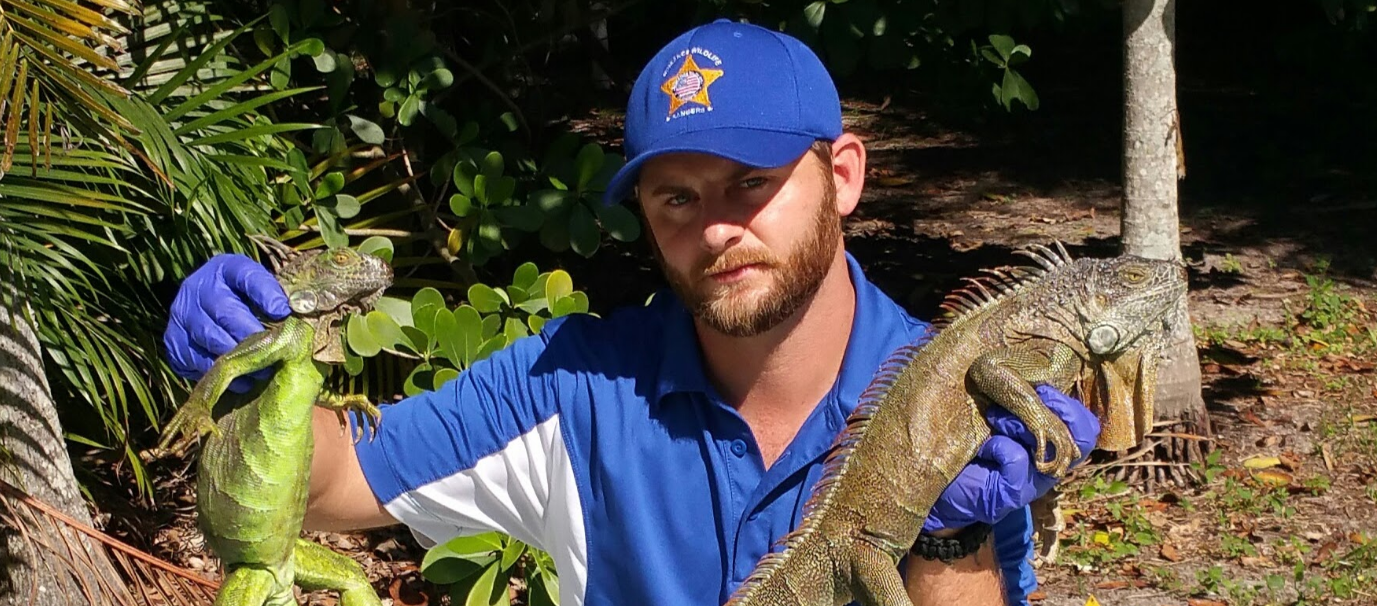Cane Toad Removal
The Cane Toad (Rhinella marinus) is a large, non-native amphibian that was introduced to Florida. Adult Cane Toads generally range from 6 to 9 inches long. Cane Toads were originally introduced in the sugar cane fields as a form of biological pest control since their natural diet includes insects. They have large parotid glands behind their ears. These glands secrete a potent milky-white toxin as a defense against predators. The Cane Toad is a psychoactive toad. This means it produces a psychoactive substance from the family of bufotoxins. This is why Cane Toads are sometimes called Bufo Toads by Floridians. The toxin itself is called 5-methoxy-N, N-dimethyltryptamine. People have been reported to lick these toads in order to experience a full body rush and powerful hallucination. In pets however this toxin is very dangerous and can even be lethal.

Adult Cane Toad found in West Palm Beach, FL
Cane Toad Control
Nuisance Wildlife Rangers will often receive calls because a dog or cat bit or consumed a Cane Toad and ended up in the Veterinarian office or worse. When their biologists arrive on site they start by looking for water sources on the property. Cane Toads can breed year round in ponds, canals, and ditches. Black streams of Cane Toad eggs have even been spotted in swimming pools. The tadpoles can sometimes be removed from small bodies of water such as buckets, pots, puddles to keep them from hatching out. Adult Cane Toads are physically removed by hand and by setting up traps. Nuisance Wildlife Rangers will check Cane Toad traps throughout the week and remove any toads captured inside. The property line can also be treated with repellants or excluded to prevent Cane Toads from accessing part of the property where pets may be kept. Cane Toad Removal is very important for the safety of your pets.

